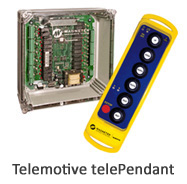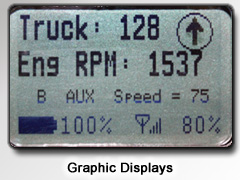Use a Remote Control To Upgrade Your Crane or Hoist

Use a Remote Control To Upgrade Your Crane or Hoist
Controlling cranes and hoists with wireless remote radio controls has been around for over 50 years but the technology has evolved considerably in recent years. Remote control manufacturers make products that are versatile, flexible, safer, more reliable, ergonomically designed, and now cost effective for even the smallest crane or hoist application.
Operating your overhead cranes and hoists from the floor, rather than the traveling operator’s cab, is more practical and economical as the operator can be removed from the cab and utilized elsewhere. Additionally, many controls have the ability to control the crane or hoist from either location should the need arise.
Pendant pushbutton stations hang from the hoist or a separate festoon track brings a crane operator to the load removing the need for a separate person to "hitch" or "signal.” However, operators are often in the wrong place to safely and efficiently operate the crane or hoists, forcing the crane operator to avoid obstacles or untangle cords. A Remote Wireless Control can solve these issues.
How Does a Crane or Hoist Remote Control Work?
Remote pendant control of cranes and hoists are transmitted by radio frequency (RF) signals or infrared light.

In the US, RF signals are widely used, accounting for approximately 98% of all remote control transmissions. Infrared systems use signals similar to those used by a TV remote, but have inherent problems like limited operating ranges; frequent lines of sight dropouts; interference from dust, bright light, and sunshine; and relegation by leading US manufacturers to down-load/up-load functions.
Modern radio remote controls often have a variety of technologies in place including:
- Graphic displays showing a wide arrange of system diagnostics including battery life, strength of signal, any warning symbols that might be present, and 2 way radio frequency for an application that requires feedback on crane or hoist alarms, parameters, and command continuation.

- Time multiple sharing allows for use of up to four systems at one time without interference.
- Frequency hopping spread spectrum (FHSS) allows your system to communicate virtually interference free. RF messages are sent over a multitude of frequencies several times a second looking for the clearest channel and avoiding risk of interference on a single frequency. Transmitting over a very long distance up to 3,000 plus feet can be achieved with Spread Spectrum technology.
- Electronically synthesized frequencies easily reconfigure transmitters, eliminating fragile crystals.
The ease of programming with these technologies means operators can customize frequency channels, security codes, and output configurations with a PDA, laptop, or other self-configure system through infrared or other communication links. Furthermore, a spare transmitter can easily be reconfigured by the user for applications on various systems without flipping dip switches or opening the case.
When used with the latest microprocessor technology such as I-Chips, flash memory, and surfaced mounted printed circuit boards, technologies in remote control systems provide the essentials in flexibility, reliability, versatility, safety, and performance you demand as a remote control crane or hoist user.
Our Hoist Central Parts Specialists are ready to help you find the right solution to your crane needs or hoist part. Reach us by phone at (888) 380-4265 or email us at sales@hoistcentral.com
